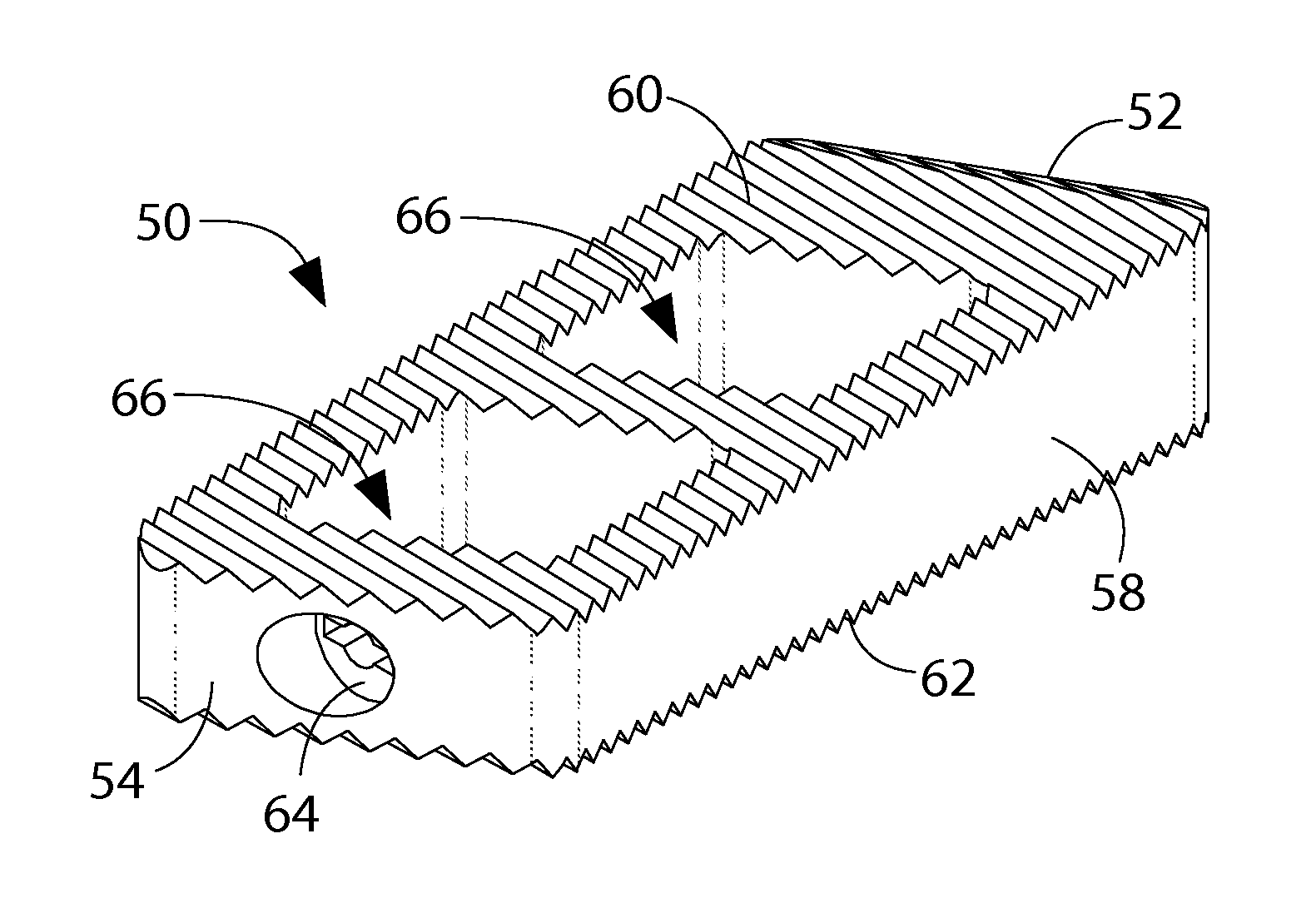Interbody Cage for Spinal Fusion and Method of Implanting Interbody Cages into Spines
a technology of spinal fusion and interbody cage, which is applied in the field of spinal stabilization, repair and/or reconstruction methods and devices, can solve the problems of insufficient rigidity and interbody fusion, insufficient surface area for adequate stabilization of the spine, and traditional devices and methods for lumbar interbody fusion that do not use minimally invasive techniques
- Summary
- Abstract
- Description
- Claims
- Application Information
AI Technical Summary
Benefits of technology
Problems solved by technology
Method used
Image
Examples
Embodiment Construction
[0034]For purposes of describing the invention, the top of an implant herein means the portion of the implant that is generally superior in position relative to the remainder of the implant after the implant has been positioned between two vertebrae of a spine and when the spine is in a normal upright position. Similarly, the bottom of an implant means the portion of the implant that is generally inferior in position relative to the remainder of the implant when the implant has been positioned between the two vertebrae and the spine is in a generally upright position.
[0035]Some embodiments of spinal interbody fusion implants 2 in accordance with the invention are depicted in FIGS. 1-4 and 9-11. Each implant 2 may serve as an interbody spacer, disc replacement, or vertebral body replacement, that is positionable between an upper vertebral body 38 and a lower vertebral body 40 (See FIGS. 5-8). Referring to FIGS. 1, 3, and 4, each implant includes a top surface 8 and a bottom surface 1...
PUM
 Login to View More
Login to View More Abstract
Description
Claims
Application Information
 Login to View More
Login to View More - R&D
- Intellectual Property
- Life Sciences
- Materials
- Tech Scout
- Unparalleled Data Quality
- Higher Quality Content
- 60% Fewer Hallucinations
Browse by: Latest US Patents, China's latest patents, Technical Efficacy Thesaurus, Application Domain, Technology Topic, Popular Technical Reports.
© 2025 PatSnap. All rights reserved.Legal|Privacy policy|Modern Slavery Act Transparency Statement|Sitemap|About US| Contact US: help@patsnap.com



